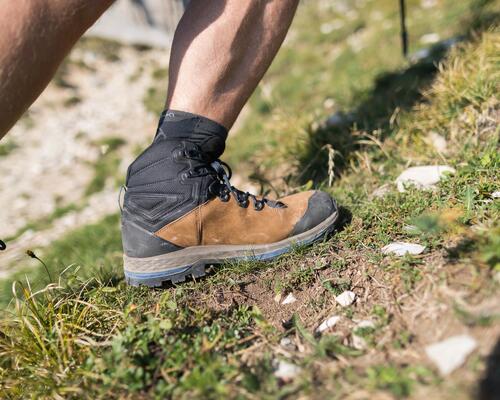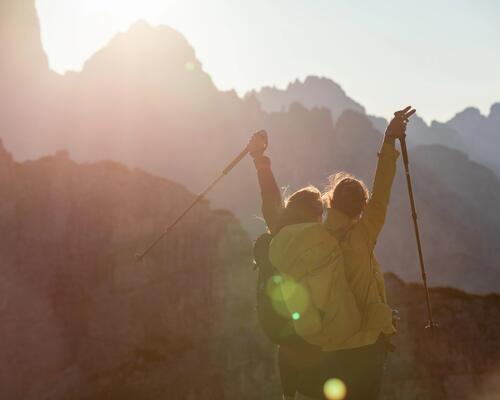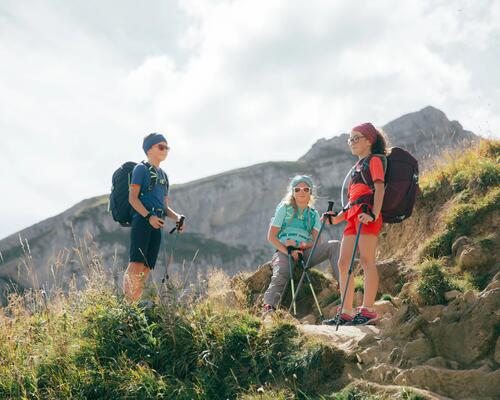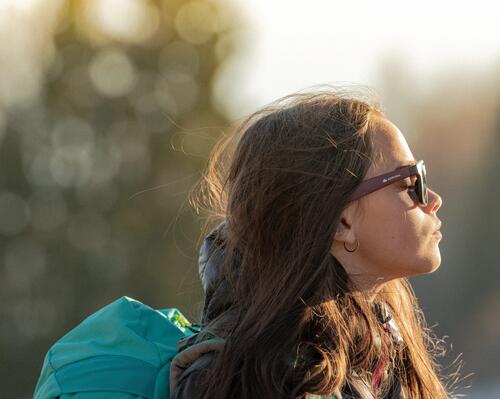Basic equipment and appropriate clothing
Regardless of where you are, appropriate hiking clothing is the easiest way to make for a fun and enjoyable hiking trip! The simplest rule to follow is the 3-layer system:
1. a light wicking base layer (made of synthetic material or natural fibres)
2. a breathable and insulating mid-layer for colder weather (fleece jacket or synthetic/down puffy jacket)
3. an outer layer and/or windproof shell to protect you from the elements (light waterproof jacket or soft shell in case of bad weather)
In more varying and colder climates, remember to avoid clothing that holds on to moisture, such as cotton!










